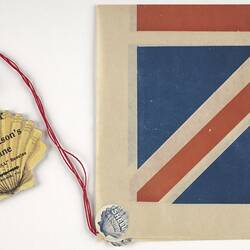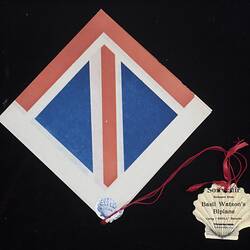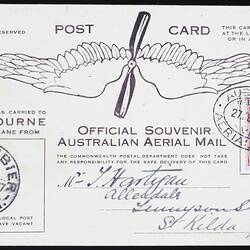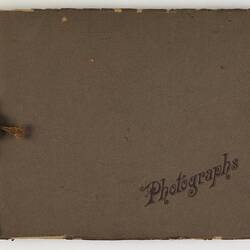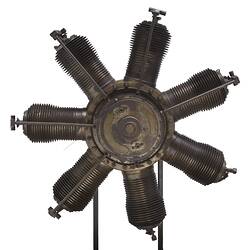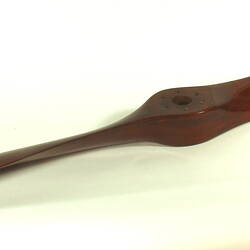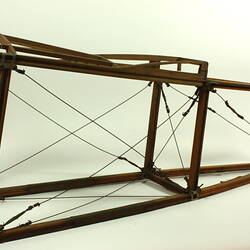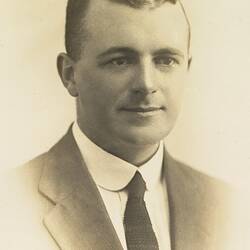Summary
Paper parachute advertising 'Shell' brand benzine (petrol). These were intended to be dropped from Basil Watson's home-built Sopwith-type biplane over Victoria and Tasmania. Watson was killed on 28th March 1917 when his aircraft broke up in flight near Point Cook and thus the promotional paper parachutes were never used.
Basil Watson was introduced to flying by Harry Hawker during an Australian publicity tour in early 1914, and subsequently travelled to England with Hawker, where he undertook flying lessons and worked as an engineer with the Sopwith Aviation Company. After the outbreak of WWI he was seconded to the British Government as a military test pilot, based at Brooklands aerodrome. He was severely injured in a crash after suffering an engine failure on take-off during a test flight in June 1915, and returned to Australia 12 months later, after being declared medically unfit for further military service. After constructing his own biplane from scratch at his parent's home in Elsternwick, in little more than 3 months, Watson piloted the aircraft on pioneering flights to Bendigo, western Victoria and Mount Gambier. He performed the first public aerial acrobatics flying demonstrations for crowds of spectators in Melbourne and country towns, and flew the first official airmail between Mt Gambier and Melbourne in February 1917. He was killed on 28th March 1917 when his aircraft crashed in shallow water in Port Phillip Bay, after a structural failure occurred as he performed an aerobatics display over Point Cook, Victoria. His death was the earliest recorded aviation fatality in Australia.
Physical Description
Folded square/rectangular paper parachute with printed with a Union Jack design. Attached by threads to a tag/weight formed from multiple layers of paper cut in the shape of a scallop shell and printed with black advertising text.
More Information
-
Collection Names
-
Collecting Areas
-
Acquisition Information
Purchase
-
Person Named
-
Inscriptions
Printed in black on tag: 'Souvenir / Released from / Basil Watson's / Biplane / Using "SHELL" Benzines ...' Also small shell shaped logo on printed on corner of parachute with the label '"SHELL" / BENZINE'
-
Brand Names
-
Classification
-
Category
-
Discipline
-
Type of item
-
Keywords
Advertising, Aircraft, Aviation Pioneers, Parachutes, World War I, 1914-1918

